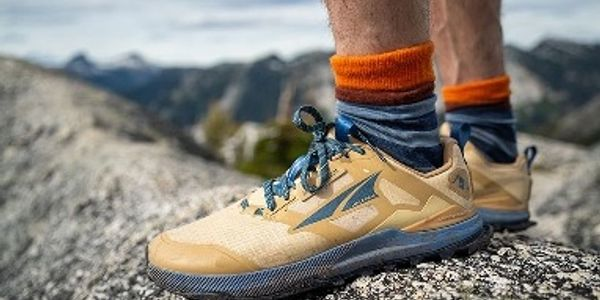How to Tie 6 Essential Knots for Camping & Hiking
By Cap Puckhaber, Reno, Nevada
I’m Cap Puckhaber, a marketing professional, amateur investor, and part-time blogger. Above all, I’m an outdoor enthusiast. Today, we’re breaking down six crucial knots that every camper and hiker should know.
When you’re out in the wilderness, knowing a few basic knots makes a huge difference. For example, you might be securing a tarp, setting up a shelter, or just tying down gear. Consequently, having the right knot can make your outdoor experience safer and more efficient. Here is a practical guide to essential knots, including their specific uses and how to tie them.
6 Essential Knots for Every Outdoor Enthusiast
1. The Square Knot (Reef Knot)
Practical Use: First, the square knot is a great choice for tying two ends of a rope together. It is especially useful when joining ropes of similar thickness. People often use it for tying bundles. Additionally, it’s a key part of basic first aid for securing bandages.
Why It’s Helpful: Fundamentally, this is a simple knot that’s quick to tie. It’s also remarkably easy to untie. The square knot is a foundational knot that holds well under tension.
How to Tie It: To begin, hold one rope end in each hand, ready to make the knot. Then, cross the right end over the left one and carefully tie it underneath. After that, take the right end, which is now on the left side, and cross it over the left rope one more time. Finally, tuck this right end under the loop and pull both ends tight to secure the knot.
2. The Bowline Knot
Practical Use: The bowline is essential for creating a fixed, non-slipping loop at the end of a rope. In fact, it’s invaluable for securing items to a fixed object, like tying a rope to a tree. It is also a critical knot used in boating and rescue situations.
Why It’s Helpful: The bowline is one of the most reliable knots. This is because it doesn’t slip or come undone under pressure. Moreover, it’s easy to untie, even after bearing a heavy load.
How to Tie It: First, you will create a small loop near the end of the rope, often called the “rabbit hole.” Next, pass the working end of the rope up through this loop, as if the ‘rabbit’ is coming out of the hole. Bring that same rope end around the standing line (the ‘tree’) and then back down through the original loop. You can then tighten the knot by pulling on the working end and the standing line simultaneously.
3. The Taut-Line Hitch
Practical Use: This knot is perfect for creating adjustable tension on a rope. Campers commonly use it for securing tent guy lines or tarps. This is especially true in windy conditions.
Why It’s Helpful: The taut-line hitch allows you to adjust the rope’s tension easily. Therefore, it is perfect for situations where a rope might loosen over time, such as in changing weather. This adjustability is its primary advantage over static knots.
How to Tie It: Start by wrapping the rope around your anchor point, such as a sturdy tree or tent stake. Then, pass the working end over the standing line and loop it underneath. You will need to make a second loop around the standing line, placing this one above the first loop. Finally, tighten the knot, ensuring the loop moves when you adjust it but stays tight when under tension.
4. The Clove Hitch
Practical Use: The clove hitch is extremely useful for tying a rope to a post or tree. People frequently use it to secure gear quickly or to begin setting up shelters. It is a foundational knot for many outdoor tasks.
Why It’s Helpful: It’s a very fast and simple knot to tie. However, it can slip or come undone if it is not under constant tension. For this reason, it’s perfect for temporary fixes but not for critical loads.
How to Tie It: First, wrap the rope completely around the post or rail. Then, cross the rope over itself, which forms an ‘X’ shape around the post. Bring the rope back around the post one more time, tucking the end under the previous wraps. Pull both ends of the knot tight to secure it to the object.
5. The Figure Eight Knot
Practical Use: The figure eight knot is a staple in professional rock climbing, where people use it to tie into a harness. However, it’s also great for creating a “stopper” knot at the end of a rope to prevent it from slipping. This stopper function is its most common use for general camping.
Why It’s Helpful: It’s easy to tie and just as easy to check visually for correctness. It is also extremely strong and doesn’t slip under load. When used as a stopper knot, it reliably prevents the rope from slipping through rings or other fixed points.
How to Tie It: Begin by forming a simple loop in the rope, creating a figure ‘8’ shape. Then, pass the working end of the rope around the standing line. Next, bring the working end back through the original loop, making sure to follow the path of the rope. You can then tighten the knot by pulling on both ends.
6. The Slip Knot
Practical Use: This knot is useful for creating a quick-release loop. You can use it for temporarily tying off gear. It’s even useful for securing clothing or a bundle you need to open quickly.
Why It’s Helpful: The slip knot is incredibly easy to adjust. Most importantly, it’s designed to be untied quickly. This design makes it great for situations where you might need to release the knot in a hurry.
How to Tie It: First, form a small loop with the rope, holding it between your thumb and forefinger. Then, pass the working end of the rope through that loop to create a second, larger loop. Finally, tighten the knot to hold the loop in place. To release the knot, simply pull on the working end, and it will come undone.
Final Thoughts: Tying It All Together
Mastering a few basic knots can make your time in the great outdoors much easier and safer. You may be setting up camp, securing gear, or creating a new shelter. These essential knots—the Square Knot, Bowline, Taut-Line Hitch, Clove Hitch, Figure Eight, and Slip Knot—are staples for any skilled camper or hiker. You should practice tying them regularly. As a result, when you’re out in the wild, you can rely on your skills to keep things secure.
About the author
Cap Puckhaber is a marketing strategist, finance writer, and outdoor enthusiast. He writes across CapPuckhaber.com, TheHikingAdventures.com, SimpleFinanceBlog.com, and BlackDiamondMarketingSolutions.com. Follow him for honest, real-world advice backed by 20+ years of experience.
Backpacking Essentials Checklist For Beginners
Field Guide to Hiking Clothes and Gear Care
A Hiker’s Guide To Trekking Poles

Join our Mailing List
Sign up with us now and be the first one to know about our exclusive offers and product updates.
By submitting your information, you`re giving us permission to email you. You may unsubscribe at any time.
Follow Cap Puckhaber on Social Media


About the Author: Cap Puckhaber
Backpacker, Marketer, Investor, Blogger, Husband, Dog-Dad, Golfer, Snowboarder
Cap Puckhaber is a marketing strategist, finance writer, and outdoor enthusiast from Reno, Nevada. He writes across CapPuckhaber.com, TheHikingAdventures.com, SimpleFinanceBlog.com, and BlackDiamondMarketingSolutions.com.
Follow him for honest, real-world advice backed by 20+ years of experience.





